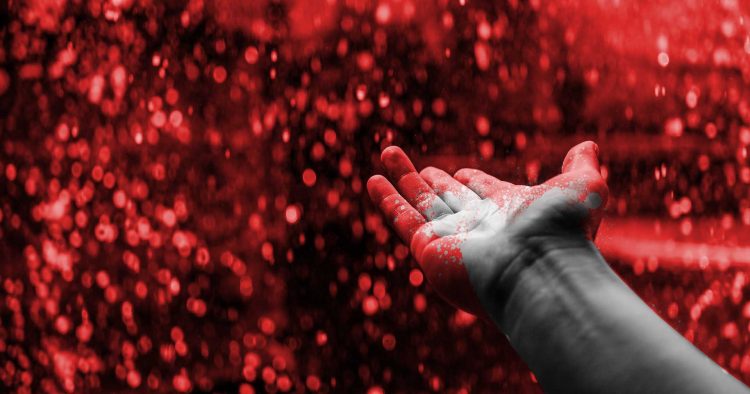The vastness of northeastern Kentucky’s scenic foothills can lend their beauty a mysterious quality, but nothing that would suggest the bizarre occurrence near Olympian Springs on March 3rd, 1876. Built on a site still known locally as Mud Lick, Olympian Springs was long renowned as the premier health resort in the Kentucky county of Bath – so named for the supposedly medicinal properties of its springs. The resort was immediately popular, becoming the destination of Kentucky’s first stagecoach line in 1803. Its success was part of a period of relative prosperity for Kentucky. The hills surrounding the Appalachian Mountains were found to be rich in iron ore, and for a time the once agricultural area exploded with charcoal-powered mines and foundries. Iron production was demanding, labour-intensive work that imposed a hardscrabble, boom-and-bust rhythm that was at that point unknown in pastoral Kentucky. Iron furnaces would quickly establish themselves as the economic centre of a town, only to go bust a few years later.
The area around Olympian Springs, however, remained largely agrarian as the iron industry waxed and waned. The success of the iron industry for the most part did not translate into infrastructural development and urbanization in eastern Kentucky, as it had in other areas. Bath County to this day remains fairly rural and sparsely populated. On a quiet day the wide expanses of rolling hills that stretch out between the farmhouses near Olympian Springs look much the same now as they did that still day in 1876 when something extraordinary happened.
It was a clear spring Friday when residents near Olympian Springs looked up in shock to see that falling from the sky were innumerable pieces of fresh, raw meat. Some just fine shreds, others in chunks as large as an envelope. One resident would later tell the national papers that it “fell like snowflakes”, raining thickly down upon the ground and sticking to trees and fences over an area of about 100 by 50 yards, much to the delight of local pigs and dogs.
The event mystified locals and attracted national media attention from The New York Times and the Scientific American. Reporters and scientists flocked to the town, eager to solve the mystery of this bizarre event that seemed to confound scientific explanation. There was disagreement even over what kind of meat it was. A witness is quoted in The New York Times as saying it looked “like beef”, a local hunter swore it was bear meat, while two residents who decided to try it reported that it tasted like venison or mutton. The reporter from the Sanitarian reported that it was not meat at all but rather a type of cyanobacteria called Nostoc. Nostoc is found on the ground but is difficult to see until it swells up in a rainstorm, leading people to believe that it fell with the rain. However, there had been no rain reported in the area and this explanation never gained much traction.

Meat Sample from 1876 – Source: scientificamerican.com
Further testing determined that it was, in fact, meat, that had fallen on Kentucky but what kind still remained uncertain. Scientists were able to confirm only its variety – identifying different samples which consisted of muscle, organ tissue, cartilage, and fat respectively. Perhaps most disturbingly, an analysis of a sample of lung tissue, which was reported in the Medical Record, determined that it had come either from a horse or a human infant.
The incident in Olympian Springs is not the only case of something strange raining down from the skies. There have actually been numerous reports of animals falling from the skies. As recently as 2014, well-verified reports documented a storm which brought fish showering down on a small village in Sri Lanka. In 2009, Japan’s Ishikawa Prefecture was plagued with repeated rains of frogs and tadpoles which carried on over the course of a month. Somewhat more nightmarishly, towns in Australia and Brazil have reported rains of spiders. Though surreal, the explanation for these events is more or less straight forward – small animals are swept up into the clouds by wind or cyclone, and eventually rained down as the air cools or they grow larger.
The explanation for the Kentucky phenomenon is a bit less definitive. The irregular and large size of some of the meat pieces makes it unlikely that they were simply swept into the sky at some point, and if there had been a recent tornado that swept through a butcher shop someone surely would have remembered it. The answer most favoured by locals was one put forward by Dr. L.D. Kastenbine in the Louisville Medical News. He hypothesized that the meat had been vomited by buzzards, which are known to disgorge themselves when startled or weary from flying. While possible, the volume of meat would suggest a large number of birds, and no one had reported seeing any in the area at the time. The flesh seemed to have rained down out of the clear blue sky.
The gruesome event was never repeated and lives on as one of the many legends echoing through the Appalachian foothills.
About the Author: Danika Drury studied philosophy and has long been a fan of all things spooky. She seeks out local ghost stories and tears up during The Fly. In addition to her work with Haunted Attractions, she has written for conferences on technological philosophy and David Bowie.

